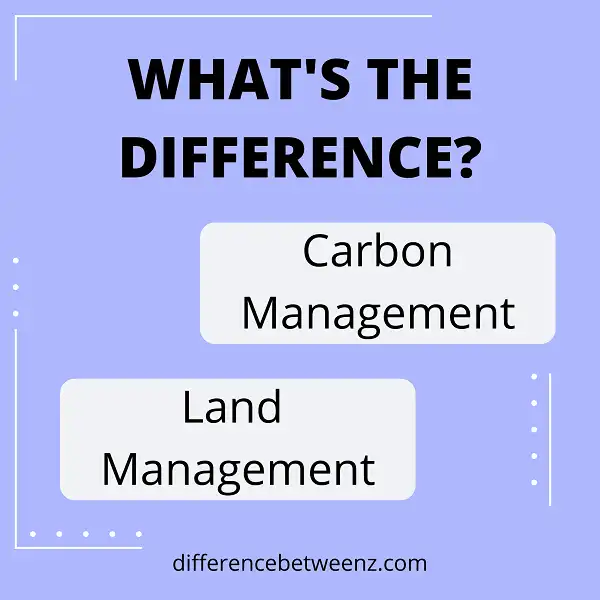Carbon management focuses on reducing greenhouse gas (GHG) emissions from organizational activities, such as energy consumption or travel. Land management, on the other hand, involves protecting natural areas and managing land use in a way that minimizes environmental impact. By understanding the distinctions between carbon management and land management, organizations can better allocate resources toward achieving their sustainability targets.
What is Carbon Management?
- Carbon management is the process of mitigating carbon emissions and increasing carbon sinks in order to offset the effects of climate change. Climate change is caused by the greenhouse effect, which occurs when greenhouse gases trap heat in the atmosphere and cause the Earth’s average temperature to rise. Greenhouse gases include carbon dioxide, water vapor, methane, and nitrous oxide.
- Carbon management seeks to reduce the emission of greenhouse gases by implementing policies and technologies that promote energy efficiency and the use of renewable energy sources.
In addition, carbon management also aims to increase the number of carbon sinks, which are natural or artificial reservoirs that store carbon dioxide. Trees and forests are natural carbon sinks, and man-made examples include soil amendment and agricultural practices that promote sequestration.
What is Land Management?
Land management is the process of taking care of and using land in order to sustain plant and animal life. This includes activities like maintaining soil fertility, controlling erosion, and conserving water resources. Land management also involves planning for future uses of the land, such as development or recreation. In order to be effective, land management must take into account the physical characteristics of the land, as well as the needs of the people and animals that live on it.
Difference between Carbon Management and Land Management
- There is a big difference between carbon management and land management. Land management is the stewardship and use of land resources to produce crops, graze livestock, build infrastructure, and extract minerals.
- Carbon management, on the other hand, is the process of reducing greenhouse gas emissions and sequestering carbon in an effort to mitigate climate change. Because land management practices can have a big impact on greenhouse gas emissions, it’s important for those involved in land management to be aware of the difference between these two terms.
- When it comes to carbon management, there are a number of things that land managers can do to help reduce emissions. For example, they can reduce deforestation and promote afforestation; implement sustainable agricultural practices; and reduce soil erosion. By taking these measures, land managers can help to slow down climate change and make a vital contribution to carbon management.
Conclusion
Carbon management and land management are two important aspects of sustainability. Though they may seem similar, there is a clear distinction between the two. Carbon management focuses on reducing greenhouse gas emissions, while land management aims to protect and improve the quality of the earth’s surface.
Carbon management has been in the spotlight recently because of its role in climate change mitigation. However, it is important to remember that carbon management is only one piece of the puzzle when it comes to sustainability. Land management is just as essential for creating a sustainable future.


